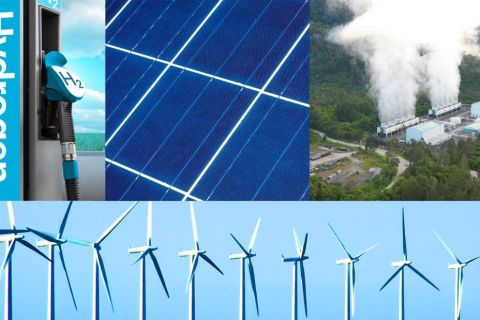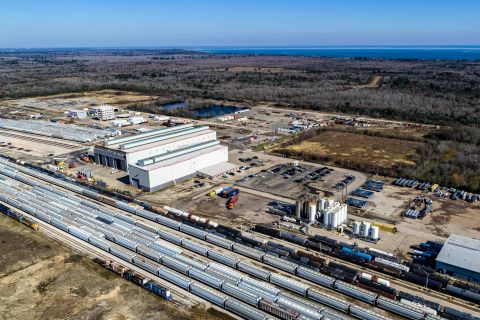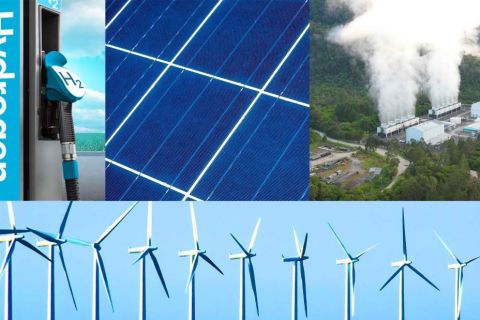Occidental Petroleum’s $12 billion purchase of the private equity-backed CrownRock LP makes 2023 the highest year for private equity exits in at least five years, according to Enverus Intelligence Research.
The Dec. 11 purchase of CrownRock, backed by private equity firm Lime Rock Partners, puts this year’s private equity exits at about $30 billion. Exits totaled $24.4 billion in 2021 and $23.3 billion in 2022—years considered to be high by people watching the industry.
“The private equity overhang might be over,” said EnergyNet CEO and President Chris Atherton.
“It’s been a very busy year. They’ve done a great job monetizing assets in their market. Tip of the hat to all the private equity guys,” said Josh Martin, a managing director at Pickering Energy Partners. “Five or six years ago, they said, ‘Look, eventually the independents are going to have to come to us for inventory,’ and that’s what’s been happening.”
The private equity selloff is so large, experts tracking it believe exits will slow dramatically next year for lack of assets to sell.
“There’s just not the opportunity set to go after because of the volume of deals we’ve seen over the last three years,” said Andrew Dittmar, senior vice president of Enverus Intelligence Research. “What you’re going to see, I think, is a pretty rapid roll up of the remaining smaller core Permian positions, but most of those are going to have less than 100 net remaining locations and are going to be smaller size deals that what we saw in the last few years.”
Atherton also said he expects 2024 will have much fewer exits by private equity.
“They’re reloading right now, but it’s not like there’s another wave [of exits] coming,” he said. “The queue of companies isn’t as plentiful.”
Exits this year by EnCap Investments stand out: by early October, it had monetized more of its E&P assets in 2023 than it had in the past five years combined.
Brooks Despot, a director at EnCap, said the exits, totaling more than $8.4 billion, were a simple matter of timing.

“It felt like it was a really compelling time to monetize the assets that we monetized because there was momentum in the market. … The reason why we sold more assets in the last 12 months than we had in the last five years combined is largely because the market wasn’t there,” Despot said, explaining that the market improved dramatically in sellers’ favor this year. Many E&Ps, particularly in the Permian Basin, have been on the hunt for quality inventory to shore up runway for future years.
“The stars aligned with everything. You had an economy that’s been roaring, you had commodity prices that are, if you look at in the context of the last five years, are [in] a very constructive place,” he said. “And by the way, if you look at the assets we sold, they’re largely oil. … There was a flurry of public buyers in the market over the last 12 months.”
Despot said the environment has changed since the period from 2013 to 2020, during which 10 to 50 wells would be drilled on an asset and then sold.
“Today, you really have to move that asset profile much further down the development timeline to fully delineate it,” he said.
Likewise, NGP Energy Capital Management partner Patrick McWilliams, said the private equity firm sold assets because of the favorable market, with strong balance sheets enabling E&Ps to buy.

“Our preferred consideration is cash, as compared to taking back equity,” he said. “Companies are in strong positions, making big quarterly cash distributions and focused on that profitability. … They need to buy an asset that is self-financing.”
He said his firm was well positioned to meet this demand.
“Our portfolio had gotten to the more mature threshold where a number of the companies that we sold … were large scale companies that had nice remaining inventory, but also had a large amount of production and free cash flow that can fund that development on a forward basis,” he said.
McWilliams said NGP’s strategy since 2020 has been more focused on developing rather than acquiring assets.
NGP declined to release annual numbers, but it was the backer of sizeable Permian Basin operators that were acquired this year, including Hibernia Energy III LLC and Tap Rock Resources. Both were bought by Civitas Resources in deals valued at a combined $4.7 billion.
Recommended Reading
Tangled Up in Blue: Few Developers Take FID on Hydrogen Projects
2024-04-03 - SLB, Linde and Energy Impact Partners discuss hydrogen’s future and the role natural gas will play in producing it.
No Silver Bullet: Chevron, Shell on Lower-carbon Risks, Collaboration
2024-04-26 - Helping to scale lower-carbon technologies, while meeting today’s energy needs and bringing profits, comes with risks. Policy and collaboration can help, Chevron and Shell executives say.
Energy Transition in Motion (Week of Feb. 16, 2024)
2024-02-16 - Here is a look at some of this week’s renewable energy news, including the outlook for solar and battery storage in the U.S.
John Cockerill Americas President Talks Hydrogen, Electrolyzers
2024-03-06 - Nicolas de Coignac, president of Americas for John Cockerill, recently spoke with Hart Energy about the company’s role in scaling electrolytic hydrogen in the U.S.
Energy Transition in Motion (Week of March 1, 2024)
2024-03-01 - Here is a look at some of this week’s renewable energy news, including Chevron’s plans for a solar-to-hydrogen facility in California.





